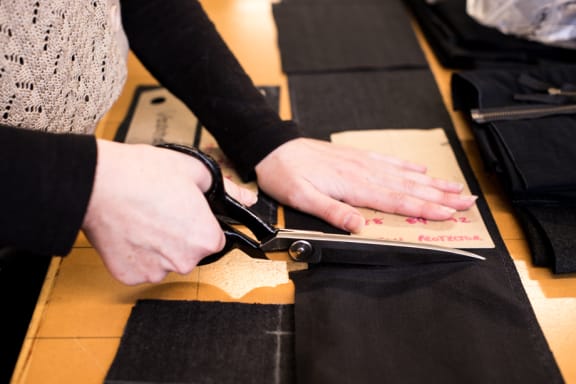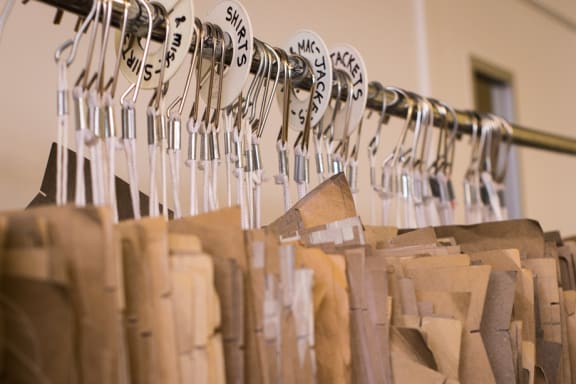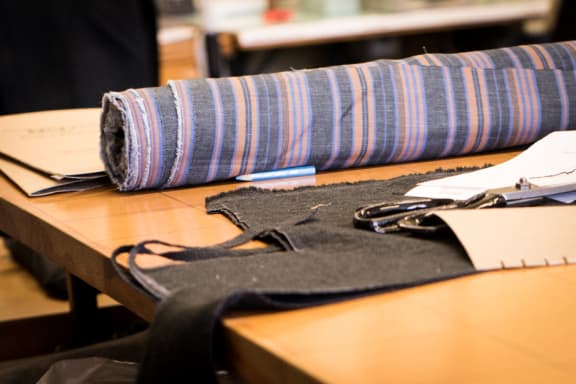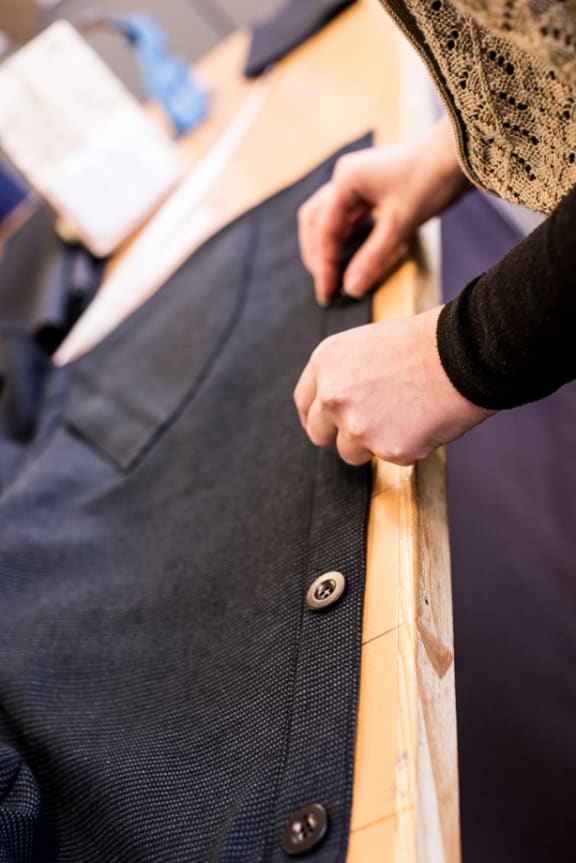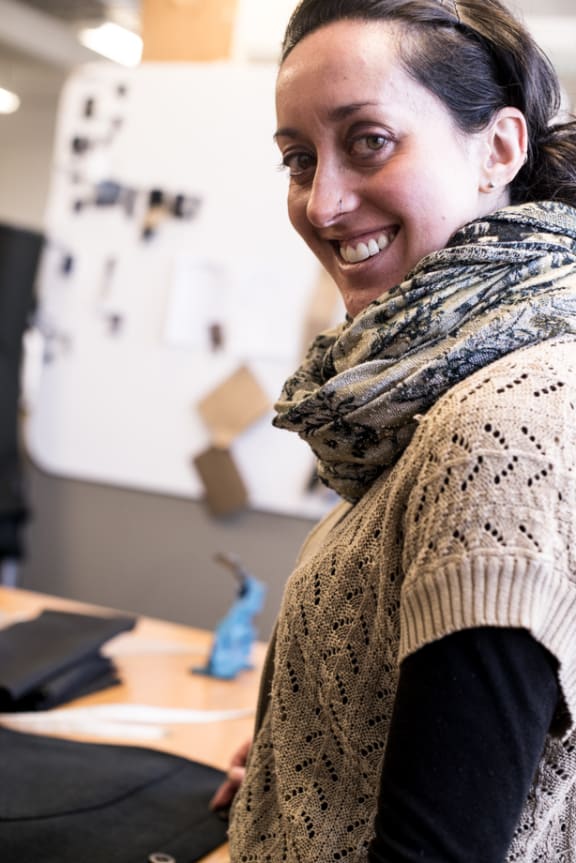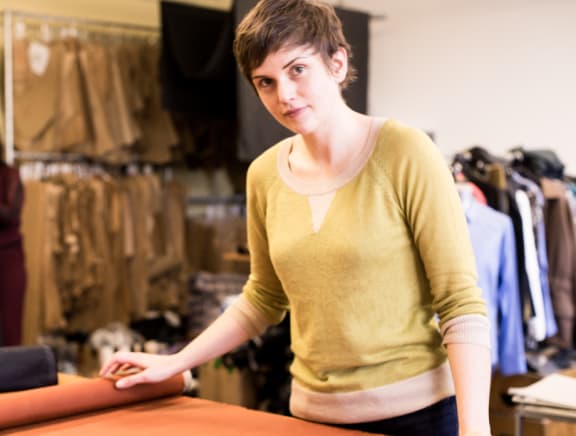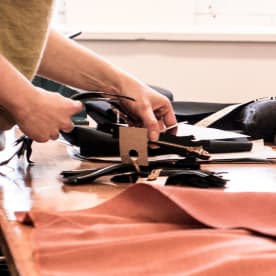Mandatory Menswear is a Wellington-based label that have been operating for the best part of two decades with the aim of providing a service that isn’t fixed to fashion—but style, tying in functionality, performance and most of all, the perfect fit. Sonia Sly headed in to meet the team and chats to Finisher—Jamie Abraham, Design Assistant—Julia Banks, and Co-founder and designer Clare Bowden, to discuss the ins and outs of how New Zealand men shop, and why they’re still dedicated to going the extra mile.
Below is a QA with Designer Clare Bowden
Sonia: What was the menswear market like when you first started out?
Clare: There was a really big gap in the market and we were instantly popular. Saatchi’s sent their front guys to get uniforms [and] we had all sorts of clients ready to go. Particularly the Polynesian community really stood out because they hadn’t found garments that fitted them, that were their flavour off-the-rack, so they really appreciated the sort of fabrics and builds we could get up. It is an extremely difficult area to work in— guys are not the keenest shoppers, they don’t turn up seasonally, but just as they need things, but we’ve worked really hard to work create our own niche and that is offering a custom fit to make things right for people. It’s created a whole lot of loyalty, and increasingly, respect from an ecological and ethical point of view…there’s lots of good reasons to support a little business and get a great result.
Sonia: Why menswear, and not womenswear?
Clare: I actually had a very successful women’s wear label that I sold through Zana Feuchs stores in the mid-nineties. I really enjoyed it, I loved the fabrics, it was great!
Sonia: So you might revisit womenswear one day?
Clare: Every time I see a fabric range I give it a thought! But I just loved menswear. It was my strongest subject at design school. I love the interface with clients that we have. We’re really building things for people to have success, whether it’s in their relationships on date night or their various business pitches—it’s great fun to be working on Cuba street amongst that.
Sonia: How did Mandatory come about?
Clare: I was sharing a house with a builder who lined a shed for me—we set up the first cutting table in there.
Sonia: You co-design with business partner Fiona Edwards: what is your process and how do you work together?
Clare: Fiona is trained in a textiles background, [so] she would want to source and develop a whole fabric idea to go with a fashion garment. As a result of the designs that she will come up with we are often sourcing specific fabrics for it. My practice is to work with fabrics that we’ve already found, so it’s faster, but the two approaches is that it lead to a lot more creativity. We assemble fabrics, sourcing and purchasing year round because we drop in small runs to strengthen the range when needed. This also allows us to repeat our best sellers.
Sonia: What is the most important aspect of your design process?
Clare: The most important thing really with the designs is to make sure you’re using great fabrics in an appropriate way. We are always working on wardrobe: a collection that represents a wardrobe of ideas to cover all occasions. We then sell along the same lines. If guys really love a piece, they will understand what to put it with, and when they are going to wear it, and tick off a gap in their wardrobe.
Sonia: You made the decision early on not to wholesale, what are the benefits of that?
Clare: It’s definitely saved us during the recession to not overextend ourselves in terms of product pre-made. Fabric is really expensive and putting labour on top, it results in an expense that you’ve got out laid that you’re then gambling on in order for people to find value in it, to make that final purchase. What we do is garner a great deal of orders ahead of production, and that carries us through and allows us to manufacture a considerable amount, with a very high hit rate.
Sonia: Mandatory is all about getting the perfect fit, so how have you customised your label to work in a variety of different needs?
Clare: Rather than be remaking stock, we can make specific orders for people whether it’s changing the shape up or finding a firmer fabric, or a lighter fabric, or a deeper colour; changing the collar shape, maybe. We charge them the same as off the rack. WE run several lines of garments that are built for a cyclist shape; they’re needing everything from casual wear through to suits and work wear [they have] quite a bit of front thigh muscle, so those sort of components are built into our rack garments already. There’s a very diverse ethnicity over a really small population in New Zealand, so the 2XL guy might be a shorter beer drinking Scot, a broad but very lean Polynesian, or a tall Dutchy.
Sonia: What have you got coming up this season?
Clare: Chambray is back, and we’ve been using a lot of linen the last few seasons. It’s incredibly durable and looks fantastic when it’s old. Summer garments are going through the wash a great deal of the time, particularly on guys, so things need to have a long life and when they’re ancient and worn out still look fun for the batch. We’ve got a stretch linen that we’ve been using in a casual dress trouser—it’s very, very good for crease resistance. Some linens crease more than others, for instance with stripes, it will hide a great deal of creasing and that’s where the fashion for checked shirts go on… and on.
Sonia: Part of your ethos is about making classic items that can be worn time and time again.
Clare: Guys don’t buy as many clothes and they want that price per wear. That’s what we’re delivering: that people will want to wear it a lot and when they do, it’s going to last.
Sonia: What have you noticed about the way that men shop compared to 5-10 years ago?
Clare: There’s such an awareness to have your own personal style now whether it be for music or art, or self-expression. There are decisions to be made about what you’re prepared to spend on clothes as well. The rise of chain stores and online shopping is exposing guys to a whole lot of garments, but they could tip over to buying a whole lot of stuff, that’s just stuff. There’s a lot of competition for what people can spend their money on, but it is really important when buying fashion to try things on and make good decisions because it’s expensive and somebody, somewhere, has spent all of that time making it. [It’s] incredibly wasteful how many garments are not being worn by people and I think guys are starting to move into that danger zone of that kind of shopping, because all options are available to everybody.
